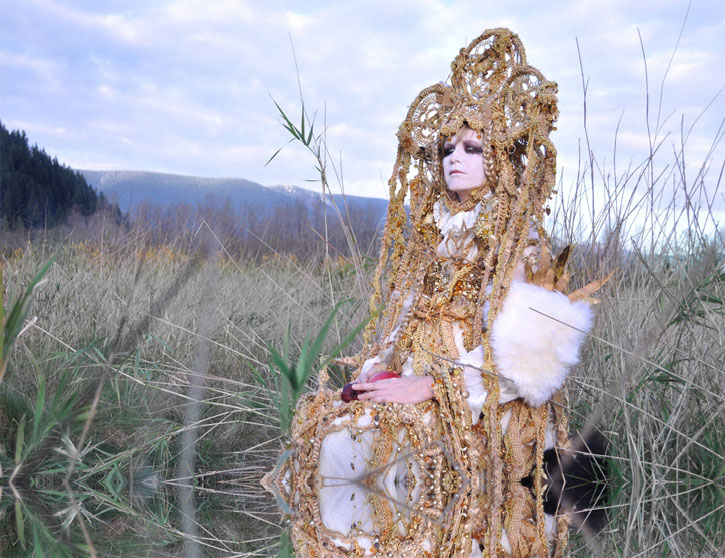
Honey And Lightening, 2011. Roq La Rue Gallery, Seattle
Artists often describe their ideas as beginning with a seed, but with Greer the analogy is more literal: her work gives the impression of growth, and her compositions wind sinuously across both body and landscape as fractalized coral reefs that gracefully devour everything they come in contact with. Her painstaking craftsmanship involves the weaving and layering of such diverse materials as buttons, pom poms, sequins, beads, plastic trinkets, glitter, mirrors, and family members’ hair. She uses “cheap materials” in such absurdly detailed, utterly chaotic excess that they they take on an aura of luminous richness.
Her latest subjects involve strong, folkloric figures festooned in elaborate headdresses. They move gracefully through kaleidoscope forests and fields of trailing grass. One gets the sense of being enveloped by an epic fairy tale, but it’s one that lacks a definitive plot. Greer draws from a wide spectrum of folk tales, finding inspiration in stories from Greek, Roman and Chinese cultures. “I stumble upon mythology that speaks to the struggle,” she explains.
There is an inherent delicacy in textile work – one that Greer both embraces and contradicts. In her works, haunting vignettes of half-told stories are littered with crocheted entrails and vines of thick, cloying mud that evoke a sense of elegant foreboding. They deal with a sense of vague narrative that, through abstraction, finds archetype; her installations whisper of timelessness – of a buried, invisible power that runs below the surface of the world that we cavalierly inhabit.
At the time of our interview, Greer was still in the process of settling into her home studio, and walking into her workspace was like entering the magical dress up box every child dreams of having. Her studio is filled with giant, color-sorted plastic bins of fascinatingly patterned and textured scraps of fabric. Half of her studio is devoted to an exposed beamed staging ground for installations, and there are so many odds and ends lying around that, for someone with an attention span as short as mine, it’s difficult to find a place for the eye to rest.
INTERVIEW CONTINUES BELOW
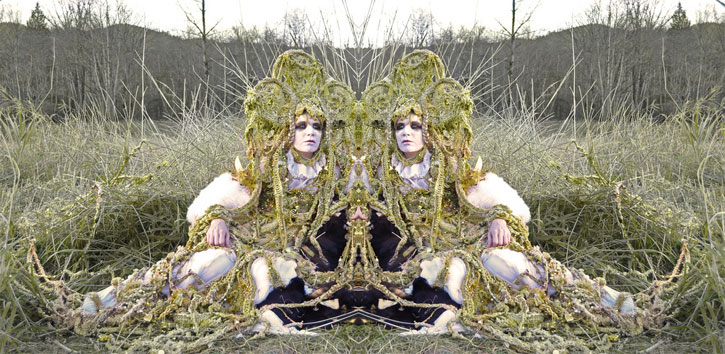
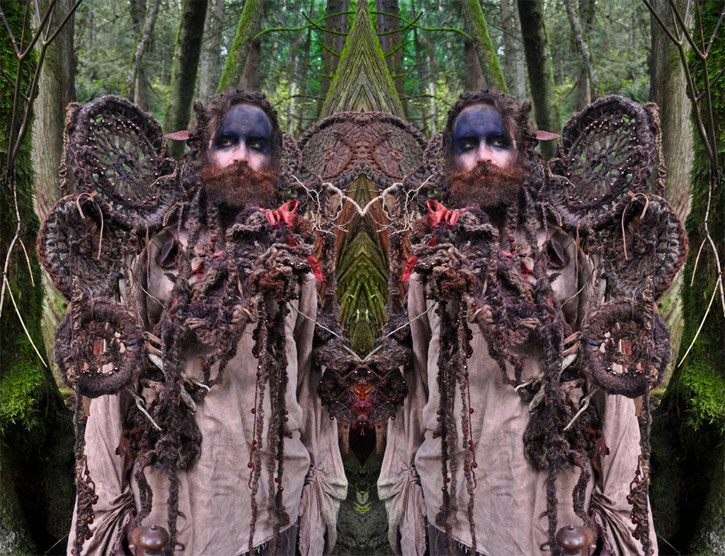 Honey And Lightening, 2011. Roq La Rue Gallery, Seattle
Honey And Lightening, 2011. Roq La Rue Gallery, Seattle
Greer and her husband, artist Paul Margolis, began working on a home studio space in response to the difficulty of procuring affordable, long-term workspace suitable for large scale installations. It took four years to procure all the necessary permits for the studio, and the process of its creation became part of the inspiration for The Cherry Root Chamber, one of the installations in Honey And Lightening. Much of Greer’s work is about unveiling and finding successive layers through exploration. In her artist statement for Honey And Lightening, Greer describes the process of revelation that accompanied digging the foundations for her studio. “The root chamber,” she writes, “is like entering this underground world hidden from view of long-ago electric ephemeral desires that have now turned into strong and sturdy roots – not as flashy as lightening, but quietly enduring and growing.”
Greer received her undergraduate degree from the Arts And Crafts program at the University of Georgia in Athens. “It sounds like a certificate you’d get from Jo-Ann [Fabrics And Crafts], right?” Greer jokes. She pursued her MFA at the University of Washington in the Ceramics department, and speaks highly of the creative freedom she found within the program.
“In some ways the UW art departments are very traditional,” she says. “Painting is oil on canvas, or there’s tension. There’s dogma.” But she cites the Ceramics department as an exception to the clearly delineated rules, and when counseling undergraduates, she always gave the advice to “be a Ceramics major then make whatever you want. You don’t have to use clay; they don’t care.”
Greer initially worked in ceramics because she was drawn to the tactility of the medium. “With clay,” she says, “there’s a whole association with functional objects that you have this really intimate relationship with, like cups that touch your mouth. I hate the whole sterility of display.” She arranged her ceramics “to seem like the private space of somebody,” and this sense of voyeuristic intimacy has remained a strong theme in her work.
Eventually, she realized that although she was working in clay, she was creating in such a way that she was circumnavigating her own medium. “I was making clay forms,” she explains, “and pouring latex over them, and then removing the latex and sewing it together.” Gradually, Greer phased out clay as a support structure, and began to work more directly with fibers.
INTERVIEW CONTINUES BELOW
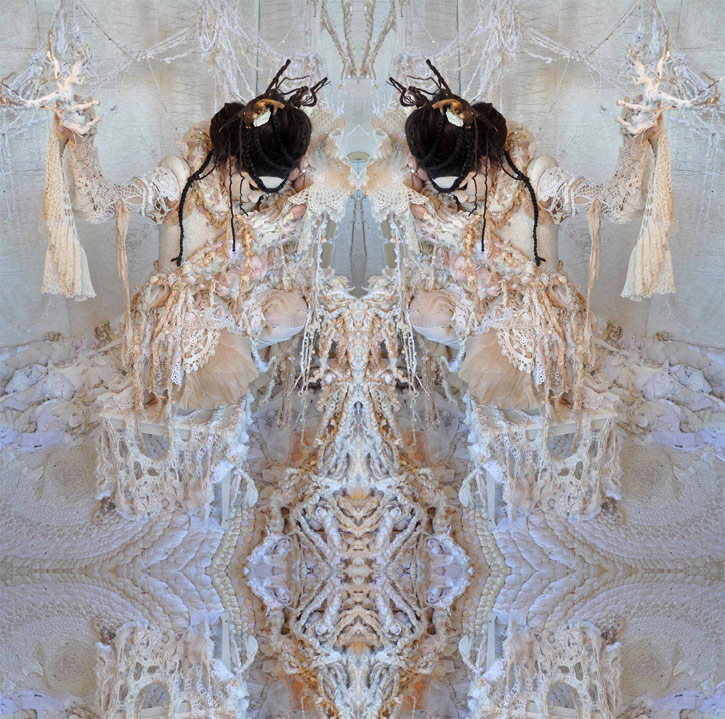
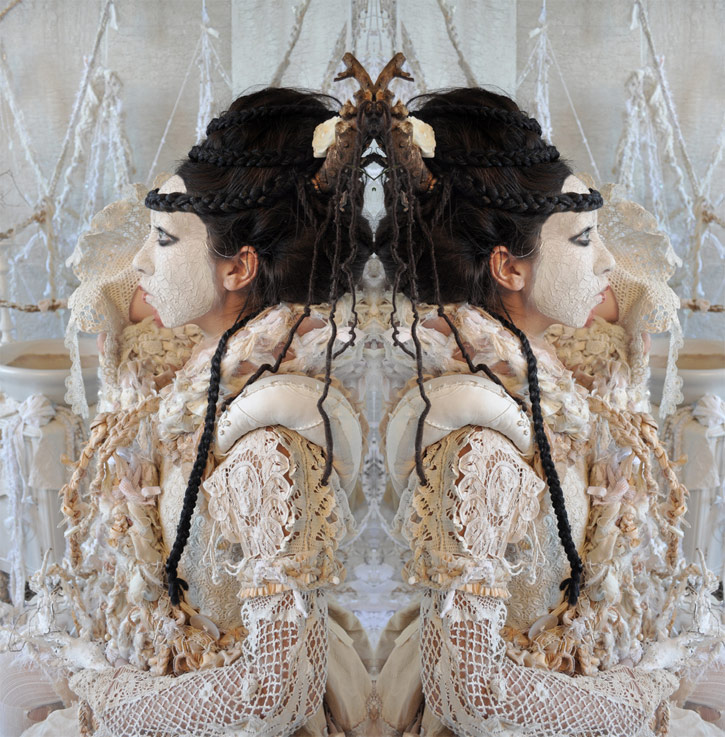 Honey And Lightening, 2011. Roq La Rue Gallery, Seattle
Honey And Lightening, 2011. Roq La Rue Gallery, Seattle
At the beginning of her career, Greer had hoped to follow the traditional trajectory of being discovered right out of grad school and instantly picked up by an established gallery. That aspiration informed her work, and she initially “wanted to make stuff that people would want to take home” in order to make a living. Shaped by her pragmatism, Greer’s earlier works were small in scale and gave nods towards accessibility, but once she “failed to be discovered,” she found new freedom.
“I abandoned [that goal] and that’s when my work got really big and unwieldy, and I couldn’t fit into that mold,” she says. Ultimately, she is very grateful for not following the path she initially envisioned for herself. “It’s so much better to have a little bit more of a struggle and not get stuck in that system.”
While Greer’s career didn’t progress as she had initially anticipated, she has achieved great success. Her big break came when she won a commission for a permanent installation at the Seattle Central Library, and she has since become a visible and active presence both in the Northwest and on a national level. Locally, she has received grants from the Washington Artist Trust, 4Culture, and The Office Of Arts & Cultural Affairs; she has worked extensively with experimental dance and music performers Degenerate Art Ensemble and has been featured on the cover of Fiberarts magazine. Like many of the artists I speak with, Greer seems a bit shy in discussing her successes, and emphasizes that it took a lot of hard work to end up where she is.
Greer’s studio is a somewhat hectic environment, and our conversation is punctuated by the comings and goings of her herd of small dogs (“One of them isn’t mine,” she makes sure to tell me. “We’re just watching him for a friend.”), and her six-year-old son, Hazel. Hazel tries admirably to give us grown-up time, but he can’t stop himself from intermittently charging into the studio to give me impromptu astronomy lessons. Greer rolls her eyes affectionately at the interruptions, and laughingly acknowledges that the decision to homeschool Hazel has certainly made it difficult to find long stretches of time to work. “He would just wither in a traditional school,” she tells me, and explains that he has grown up amidst the chaos of her creative process and is very much a part of it. Hazel informs me, with the grave enthusiasm that only a six-year-old can possess, about the mineral composition of Jupiter and the number of volcanoes on Io, his favorite moon. Listening to Hazel’s celestial factoids, I am struck by the similarities between mother and son, by their shared fascination with the grandiose, invisible underpinnings that inform our experiences of the visible world.
INTERVIEW CONTINUES BELOW
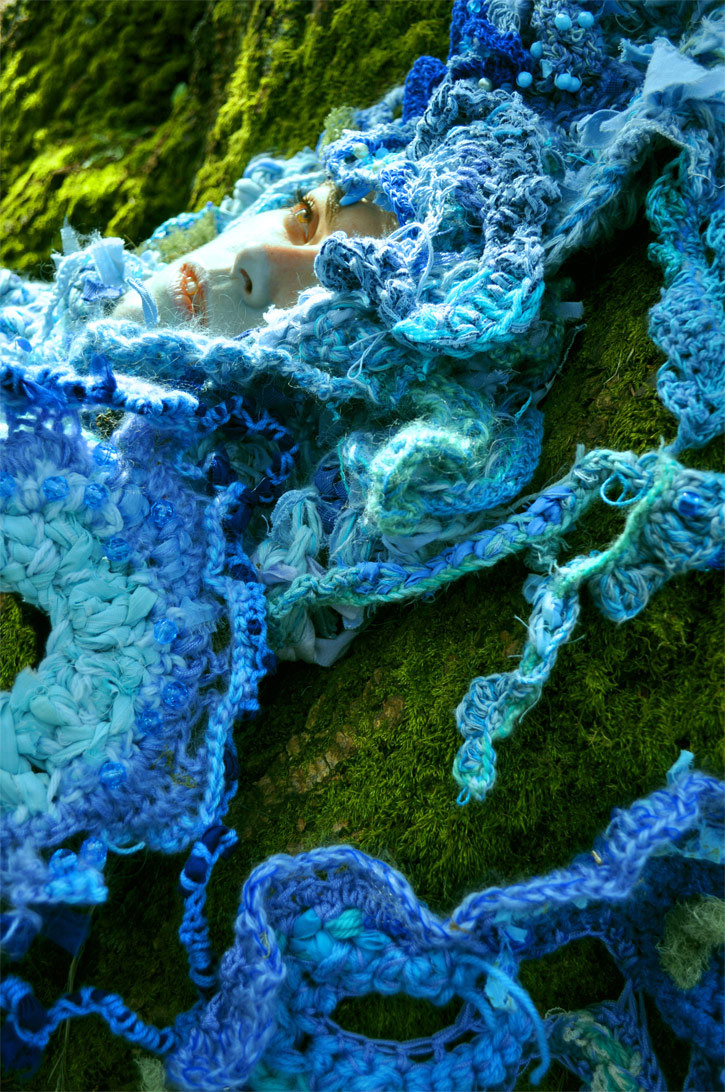 Mater Matrix Mother and Medium, 2009. Discovery Park, Seattle
Mater Matrix Mother and Medium, 2009. Discovery Park, Seattle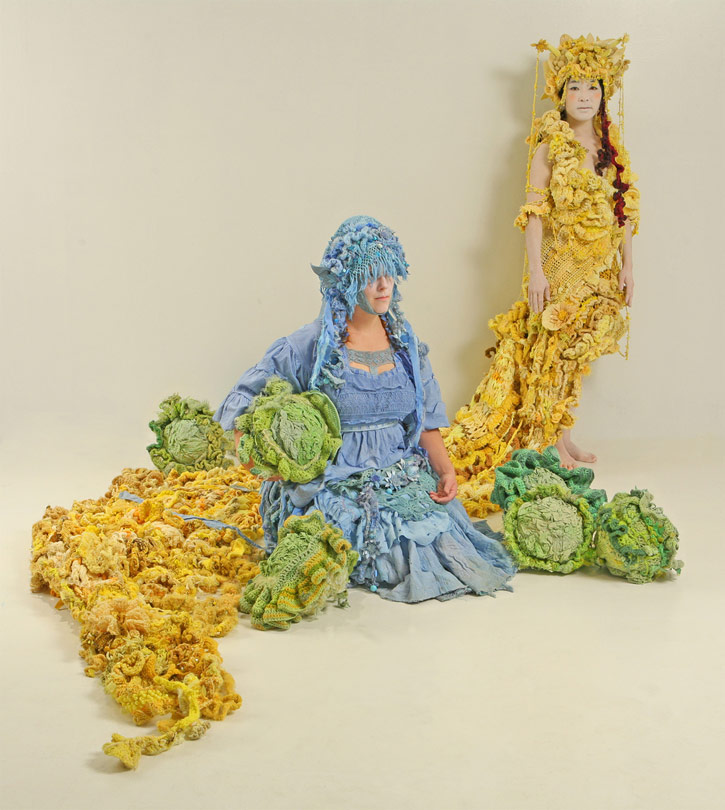 Sower And Slug Princess (for The Silvering Path), 2008
Sower And Slug Princess (for The Silvering Path), 2008
During the course of our conversation, Greer and I end up embarking on a long tangent about feminism. Being a female fiber artist necessitates the discussion of gender roles, and Greer has spent a great deal of time mulling over the relationship between her gender and the traditionally feminine associations of her medium.
“The nature of my work means that I get co-opted into a lot of conversations about feminism,” she tells me in the firm voice of someone who has learned to be strongly opinionated without coming across as aggressive. In describing her technique, Greer explains that she sews and crochets “like a bachelor,” and that she deliberately maintains a rough-hewn technique in a refusal to be pigeonholed by the handcrafted element of her work. There is a ferocity to Greer’s construction that stubbornly demands the acknowledgement of the masculine element of handwork.
“It’s interesting when men sew,” Greer tells me. “It’s not anything new. [My husband] Paul, as a man who sews, has a personal research project, and has always been drawn to learning about historical evidence of men sewing. In the Civil War, [in] convalescent homes for injured soldiers – they made quilts. Sailors have always been big sewers, knitters, crocheters, knotters… Handwork is not something that needs to be inherently feminine, and I like that idea.”
Greer often finds herself frustrated by what she sees as the “dude art” scene of the Northwest –- hot shot young male artists who achieve rapid success by “messing around with building materials”– and she wishes that there could be a more egalitarian discussion of implicitly gender-charged mediums. She tells me of a female friend who paints flowers, and how there would be a “different level of impact” if the same work were to be created by a male artist.
She pauses, trying to find the right words to express the subtle distinctions between the feminist connotations of her medium, and her own personal relationship to feminism. “The tactile quality of what I’m after,” she explains deliberately. “It’s about what it is to have a body, to have skin. But I am a woman in the 21st century, and it’s inescapable to talk about my own feminism.” For Greer, she sees her feminism as being expressed through the themes and archetypes that she chooses to explore, and has been frustrated in the past by what she sees as the art world’s insistence that her art is feminist simply because it’s handwork.
Greer is currently working on Biologica Symbolica, a permanent installation for Seattle’s Bow Lake Elementary School that will explore the concept of the four elements. Throughout Summer 2011, she will also be doing an open studio residency at a new multidisciplinary art space called The Project Room, for which she will interview weekly guest artists, host a series of community crocheting events, and maintain a process blog of her work.
Everything will be in preparation for a upcoming residency in Reykjavik, Iceland, where Greer plans to create work based around the A.S. Byatt short story, A Stone Woman. She quickly tells me the plot, explaining that the story is about a woman who, in her grief, gradually dissolves into her surrounding landscape. And it is there that our conversation ends, with a quote from Greer that elegantly sums up her own work.
“It’s a haunting story,” she says. “It’s at once terrifying and beautiful.”
mandygreer.wordpress.com
VIDEO: The Silvering Path, 2008. A film by Ian Lucero, in collaboration with Mandy Greer and Haruko Nishimura.

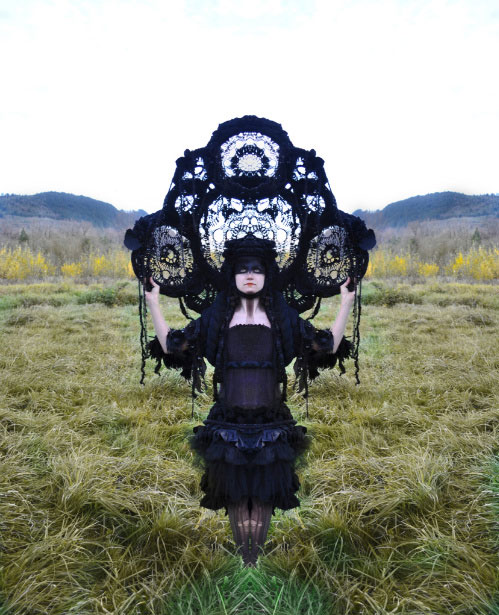



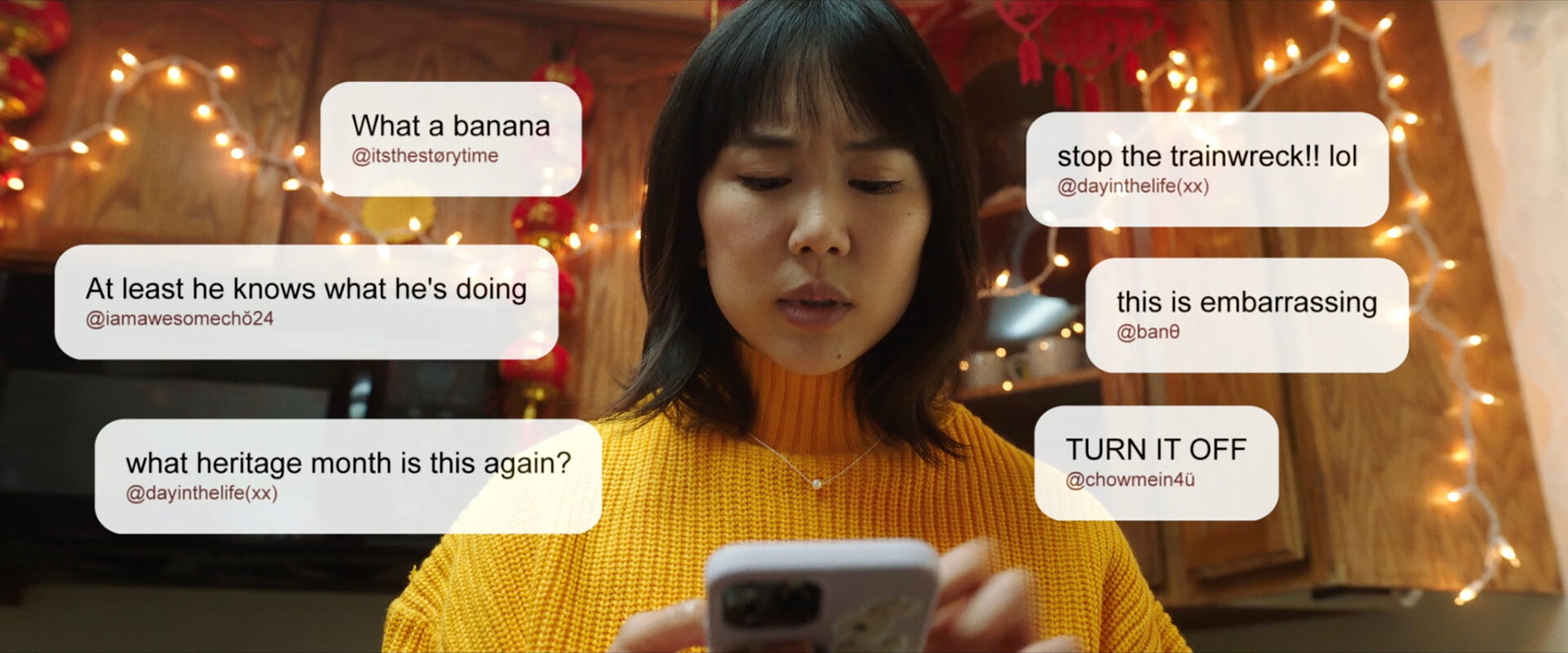
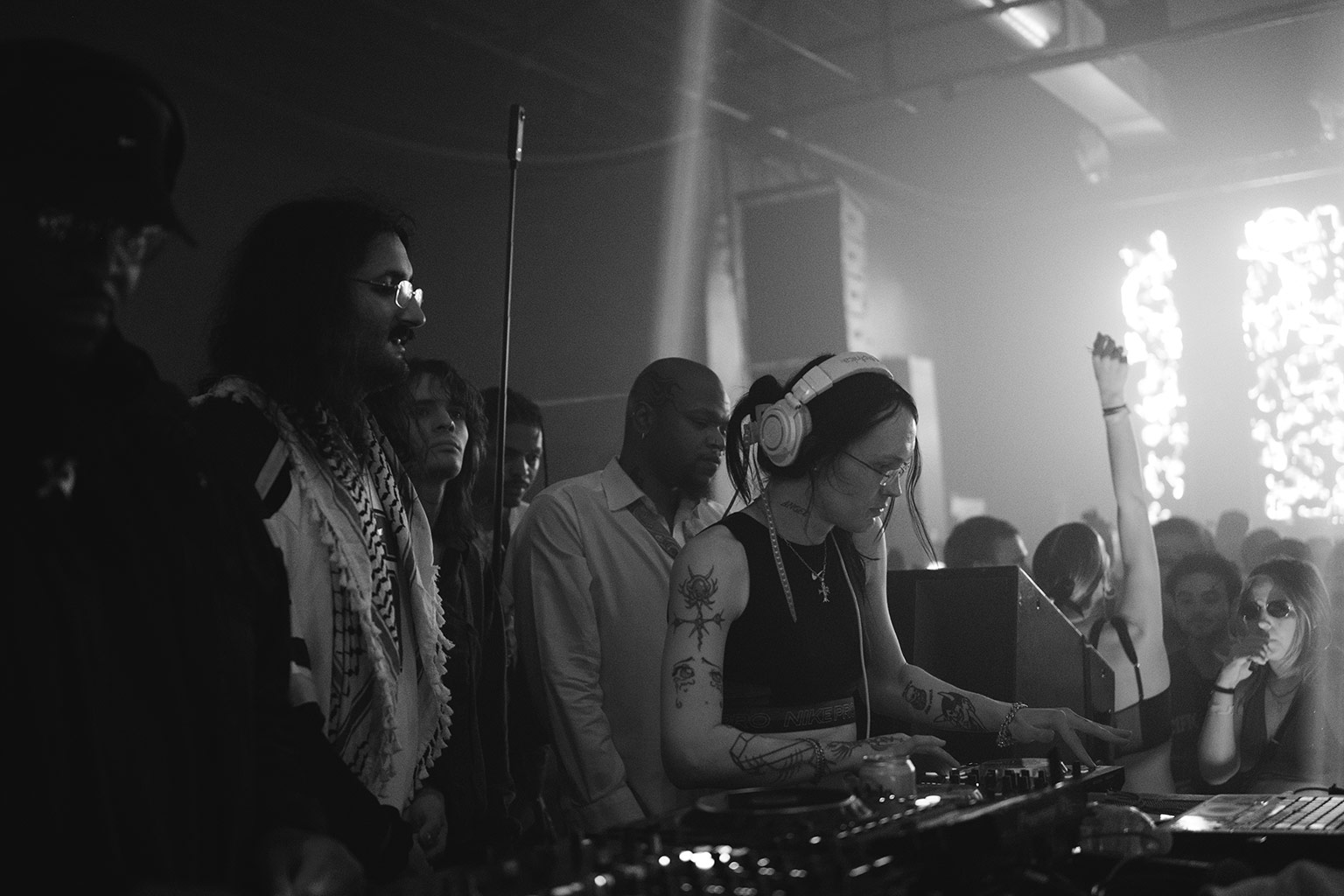
[…] I stumble upon mythology that speaks to the struggle (Greer) […]
[…] it comes to feminism, Greer comments on the movement, and offers a lot of food for thought. In an interview with Tessa Hulls, she […]